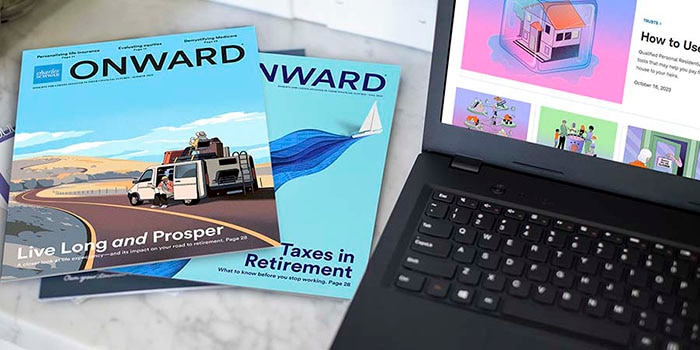
Like any business, exchange-traded funds (ETFs) can close up shop. But with so much riding on your investments, you want to be sure your ETFs are as sound as possible.
"Some ETFs are much more susceptible to closure than others," says Emily Doak, CFA, director of ETF and index fund research at the Schwab Center for Financial Research, "so it's important to be aware of certain characteristics when researching funds for your portfolio."
Which funds are most likely to close?
Leveraged and inverse ETFs—which use derivatives and/or futures contracts in an attempt to provide either a positive or a negative multiple of an index's performance—are most prone to closure. In fact, 47% of all such funds have closed down, compared with a closure rate of 28% for nonleveraged, noninverse ETFs.1 "Leveraged and inverse funds generally aren't meant to be held for longer than a day, and some types of leveraged and inverse ETFs tend to lose the majority of their value over time," Emily says. "Standard ETFs, on the other hand, typically close down because they aren't attracting enough assets to be profitable for their issuers."
Which ETFs are least likely to close?
There are no guarantees, but ETFs with these characteristics are less likely to close:
Significant assets under management:
Investors should be cautious of the higher potential for closure with funds that have less than $20 million in assets. Funds with more assets are generally more likely to be considered profitable for their issuers and therefore more likely to endure.
To determine a fund’s assets under management, log in to the ETF screener and select Total Assets under Basic Criteria, then select an asset range.
Longer life span:
On average, funds that close tend to do so within three to five years of their inception.
To determine a fund’s age, log in to the ETF screener and select Inception Date under Basic Criteria, then select a time frame.
Less risky product type:
Given their high closure rates—as well as other inherent risks—you may want to avoid inverse and leveraged products altogether.
To determine a fund’s type, log in to the ETF screener and select Fund Type under Basic Criteria, then select Not Leveraged or Inverse next to Exchange Traded Funds.
What happens if my ETF closes?
You generally have two options for retrieving your principal:
- Wait for the payout: If you retain your shares until the fund closes, you'll receive a cash distribution after the remaining assets have been liquidated. The distribution per share will ordinarily be close to the net asset value per outstanding share at the time of the fund's closing, and since you're not trading your shares in the secondary market, you'll avoid the bid-ask spread. Most final distributions are made to investors within three to five business days of an ETF's delisting, though some have taken a week or longer.
- Liquidate immediately: Selling your shares before the closure date allows you to reinvest the principal more quickly, since the standard settlement for ETFs traded on national exchanges is just two business days. You'll receive the bid price when you sell, which is typically slightly less than the value of the fund's underlying investments.
Be mindful, too, of the potential tax consequences. "If you've owned the fund for less than a year and it closes at a higher share price than you paid, you could owe taxes on any short-term gains, which are taxed at ordinary income rates," Emily says.
1Morningstar, as of 05/09/2023.
Discover more from Onward

Keep reading the latest issue online or view the print edition.
Investors should consider carefully information contained in the prospectus or, if available, the summary prospectus, including investment objectives, risks, charges, and expenses. Please read it carefully before investing.
Leveraged ETFs seek to provide a multiple of the investment returns of a given index or benchmark on a daily basis. Inverse ETFs seek to provide the opposite of the investment returns, also daily, of a given index or benchmark, either in whole or by multiples. Due to the effects of compounding, aggressive techniques, and possible correlation errors, leveraged and inverse ETFs may experience greater losses than one would ordinarily expect. Compounding can also cause a widening differential between the performances of an ETF and its underlying index or benchmark, so that returns over periods longer than one day can differ in amount and direction from the target return of the same period. Consequently, these ETFs may experience losses even in situations where the underlying index or benchmark has performed as hoped. Aggressive investment techniques such as futures, forward contracts, swap agreements, derivatives, or options can increase ETF volatility and decrease performance. Investors holding these ETFs should therefore monitor their positions as frequently as daily.
Investing involves risk including loss of principal.
The information provided here is for general informational purposes only and should not be considered an individualized recommendation or personalized investment advice. The investment strategies mentioned here may not be suitable for everyone. Each investor needs to review an investment strategy for his or her own particular situation before making any investment decision.
All expressions of opinion are subject to change without notice in reaction to shifting market conditions. Data contained herein from third-party providers is obtained from what are considered reliable sources. However, its accuracy, completeness, or reliability cannot be guaranteed.
Examples provided are for illustrative purposes only and not intended to be reflective of results you can expect to achieve.
0823-3V9C

